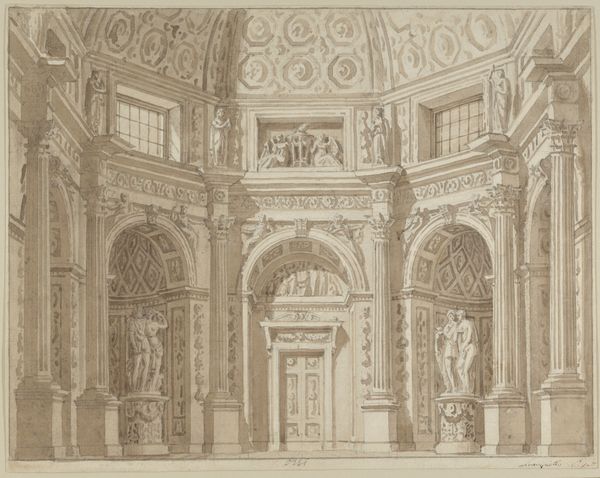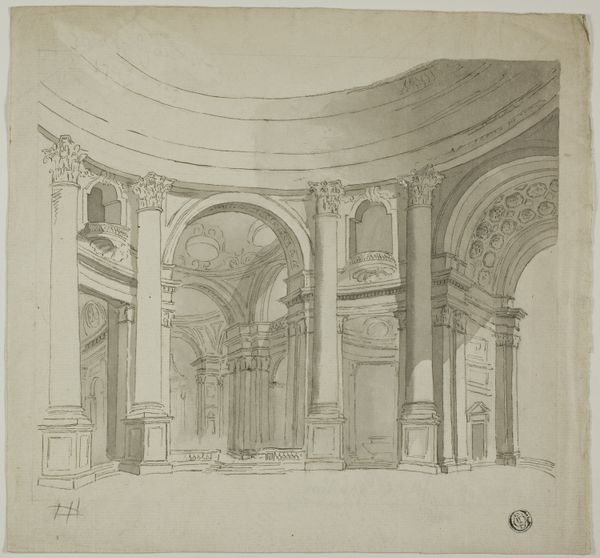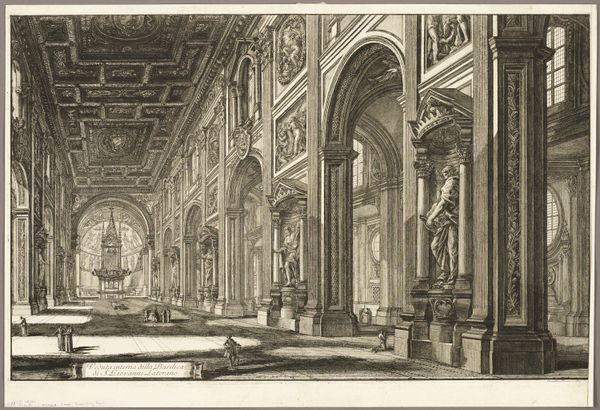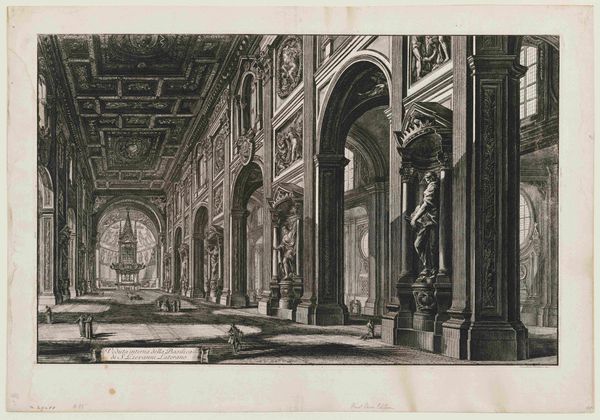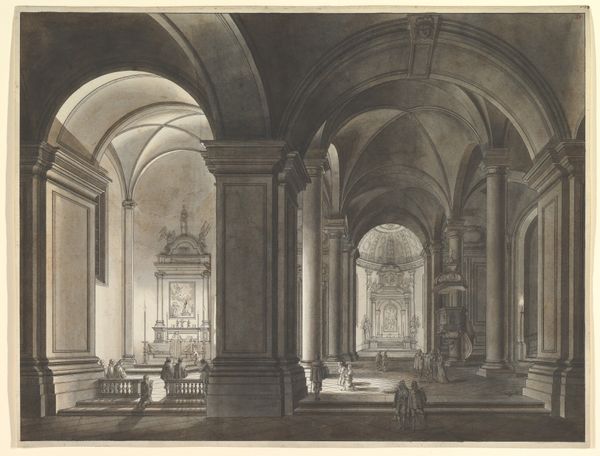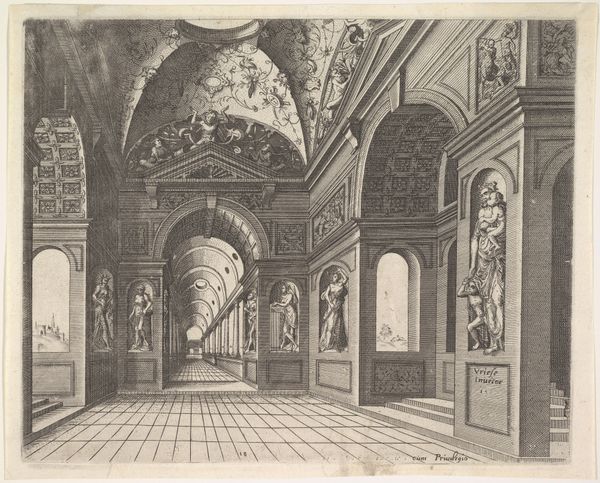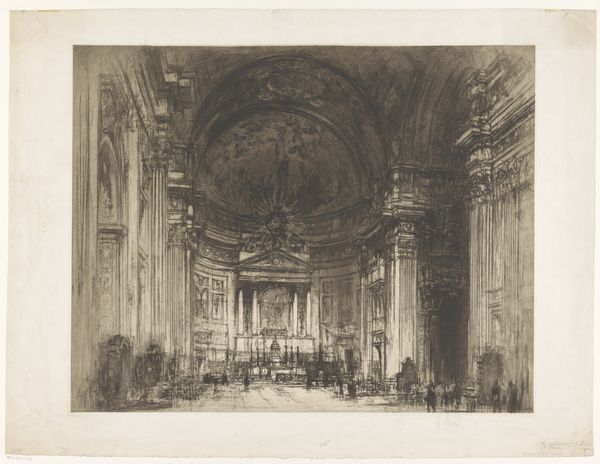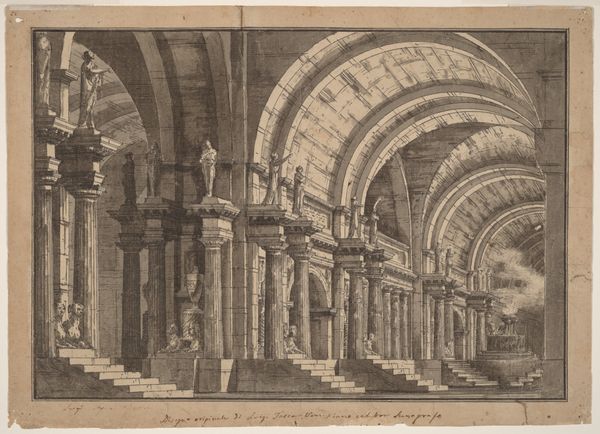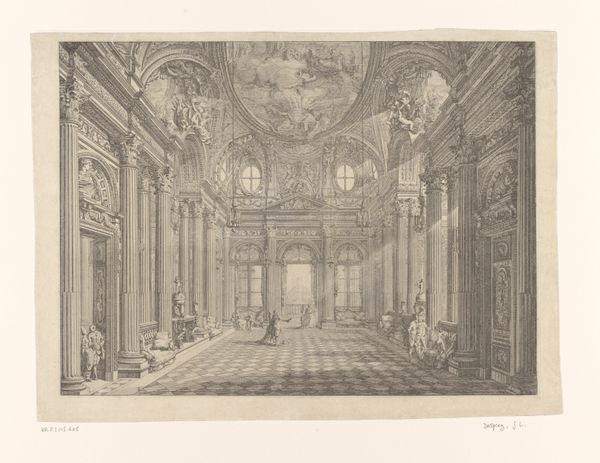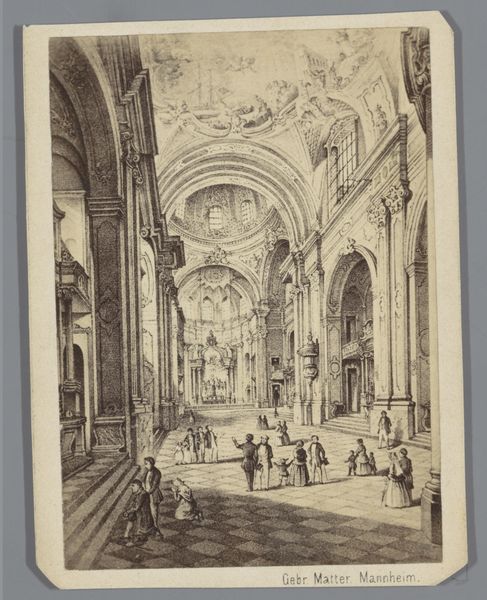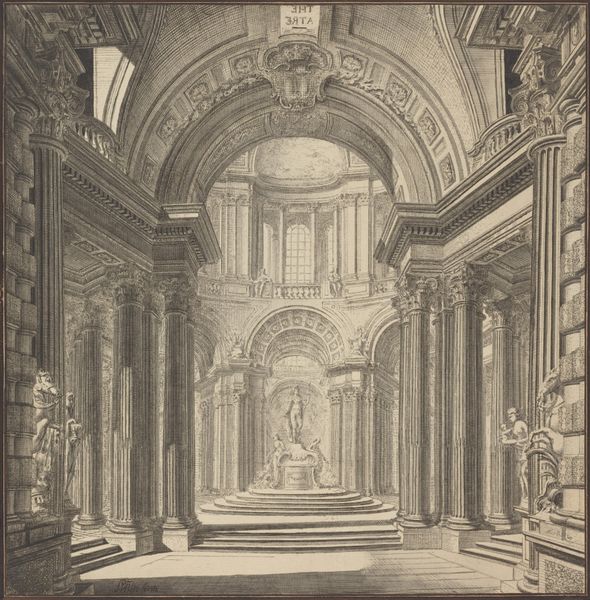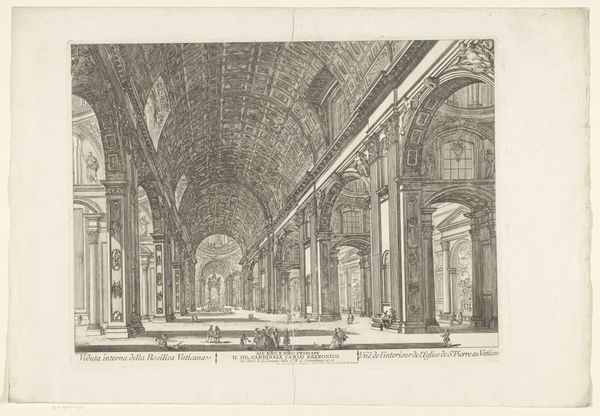
Blick in das Innere einer Barockkirche mit Staffagefiguren in der Tracht des 17. Jahrhunderts 1791
0:00
0:00
drawing, ink, architecture
#
architectural sketch
#
drawing
#
neoclacissism
#
perspective
#
ink
#
15_18th-century
#
line
#
academic-art
#
architecture
Copyright: Public Domain
Editor: Here we have Johann Ludwig Ernst Morgenstern’s 1791 ink drawing, “View into the Interior of a Baroque Church with Staffage Figures in the Costume of the 17th Century.” The architecture overwhelms the tiny figures. What elements stand out to you? Curator: Immediately, the linear perspective dictates my reading. Morgenstern meticulously renders orthogonals, drawing our eye to a vanishing point that amplifies the depth and height of the architectural space. Consider how the strong lines of the columns and arches work in contrast with the light wash used to convey form and shadow. What do you make of this interplay? Editor: It makes me wonder if he prioritized the building over the people. The figures look like afterthoughts, almost like architectural details themselves! Is that related to Neoclassicism? Curator: Precisely! Neoclassicism prized order and reason. The drawing champions the rationality of architectural design evident in the linear structure and controlled perspective while reducing the human figure. Ask yourself: how would this space feel without those staffage figures? Editor: Empty, perhaps even more imposing. They give a sense of scale, even though they’re minimal. But ultimately, they underscore the vastness. Curator: Consider how the drawing's composition reflects the Enlightenment values. Is it about architectural design or the individuals that occupy such spaces? Editor: So, the severe style enhances the overwhelming nature of the church's architecture. It's amazing how much the formal qualities tell us about its cultural context. Curator: Indeed. It shows how the meticulous use of line and perspective creates not just an image but a statement about structure, order, and proportion.
Comments
No comments
Be the first to comment and join the conversation on the ultimate creative platform.

